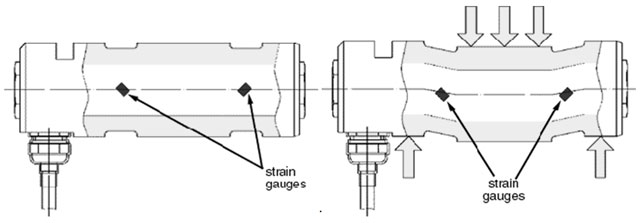Click here to download our load pin installation notes: DOWNLOAD
Getting the most efficient results from your load pin installation: DOWNLOAD
Click here to download our order specification sheet: DOWNLOAD
Installation Notes
Various factors influence the performance of a load pin when it is put into service. The majority of load pins are designed to fit existing structures so that each design is dependent on the size and constraints of that structure.
A rigid support structure is required to minimize the bending forces imparted on to the pin. The pin works by sensing the shear stress, and any bending stresses within the pin will degrade its overall accuracy. The fit of the pin within its mating holes is important in the overall performance. Bearing stresses, and overall proportions are always taken into consideration with the design of a new pin.
Before installation note the Direction of Load arrow on the end of the pin. The key consideration in the performance of any load pin is that there is no change in the geometry, the loading structure or loading conditions throughout the range (0 -100%).
If these conditions are achieved then a high performance can be expected. Even minimal bending of the structure, changes in bearing areas or bending of the load pin (if highly loaded) will have an effect on performance however repeatability is unlikely to be affected.

Calibration
Load pins are normally calibrated in half or full blocks in a traceable compression test machine.
When a load pin shackle is supplied, we would normally calibrate the total shackle assembly in tension.
We endeavor to match the loading conditions that would be experienced in service but it would be unrealistic to totally simulate the on-site structure for every load pin manufactured. It is for this reason that for optimum system accuracy, a calibration in the final assembly is recommended.

